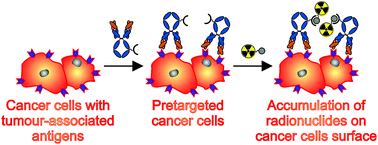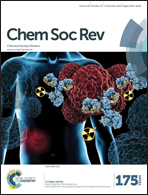New insights into the pretargeting approach to image and treat tumours
Abstract
Tumour pretargeting is a promising strategy for cancer diagnosis and therapy allowing for the rational use of long circulating, highly specific monoclonal antibodies (mAbs) for both non-invasive cancer radioimmunodetection (RID) and radioimmunotherapy (RIT). In contrast to conventional RID/RIT where the radionuclides and oncotropic vector molecules are delivered as presynthesised radioimmunoconjugates, the pretargeting approach is a multistep procedure that temporarily separates targeting of certain tumour-associated antigens from delivery of diagnostic or therapeutic radionuclides. In principle, unlabelled, highly tumour antigen specific mAb conjugates are, in a first step, administered into a patient. After injection, sufficient time is allowed for blood circulation, accumulation at the tumour site and subsequent elimination of excess mAb conjugates from the body. The small fast-clearing radiolabelled effector molecules with a complementary functionality directed to the prelocalised mAb conjugates are then administered in a second step. Due to its fast pharmacokinetics, the small effector molecules reach the malignant tissue quickly and bind the local mAb conjugates. Thereby, corresponding radioimmunoconjugates are formed in vivo and, consequently, radiation doses are deposited mainly locally. This procedure results in a much higher tumour/non-tumour (T/NT) ratio and is favourable for cancer diagnosis and therapy as it substantially minimises the radiation damage to non-tumour cells of healthy tissues. The pretargeting approach utilises specific non-covalent interactions (e.g. strept(avidin)/biotin) or covalent bond formations (e.g. inverse electron demand Diels–Alder reaction) between the tumour bound antibody and radiolabelled small molecules. This tutorial review descriptively presents this complex strategy, addresses the historical as well as recent preclinical and clinical advances and discusses the advantages and disadvantages of different available variations.



 Please wait while we load your content...
Please wait while we load your content...